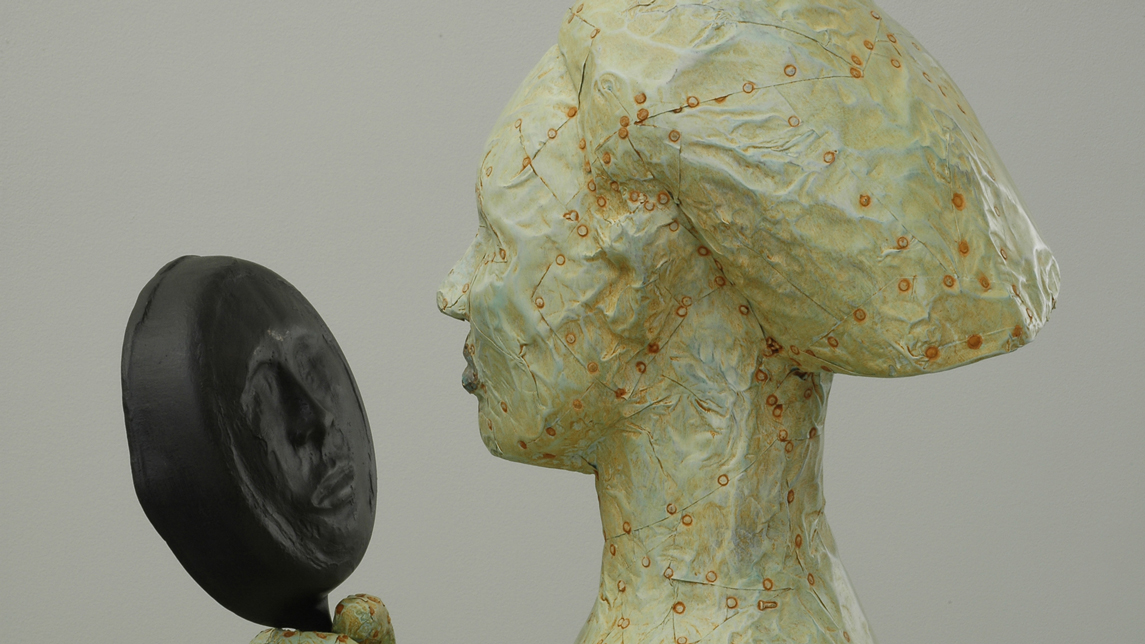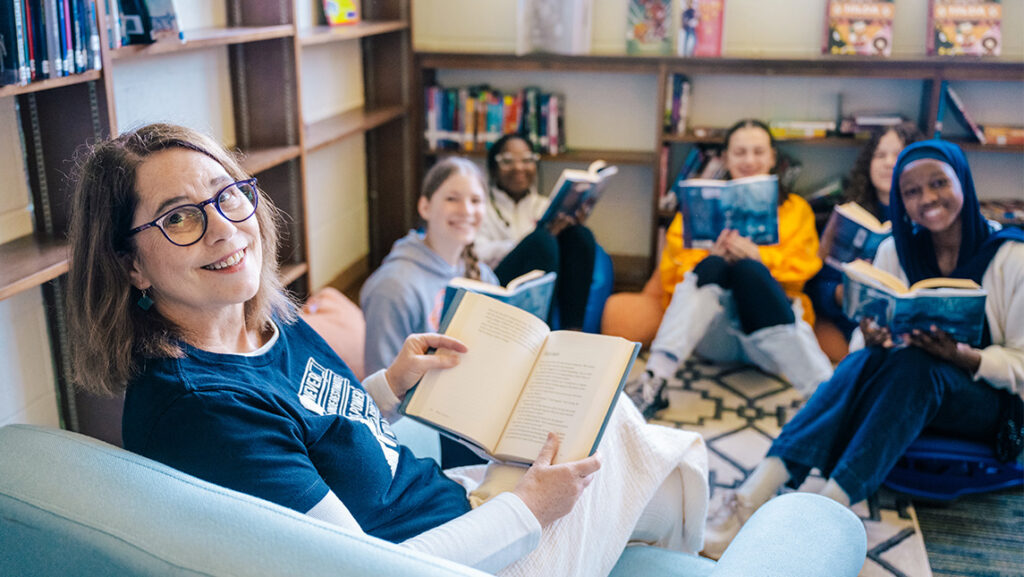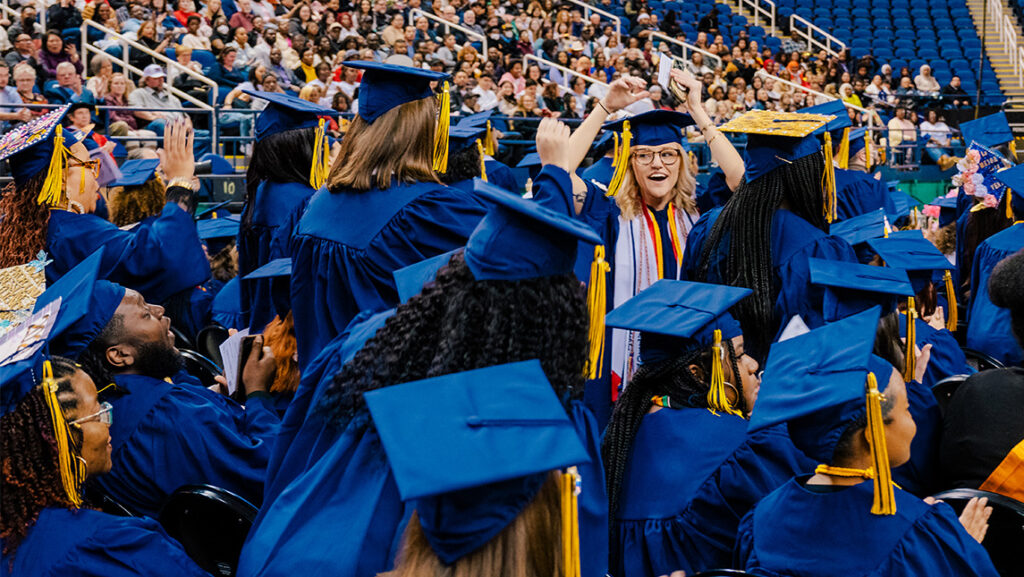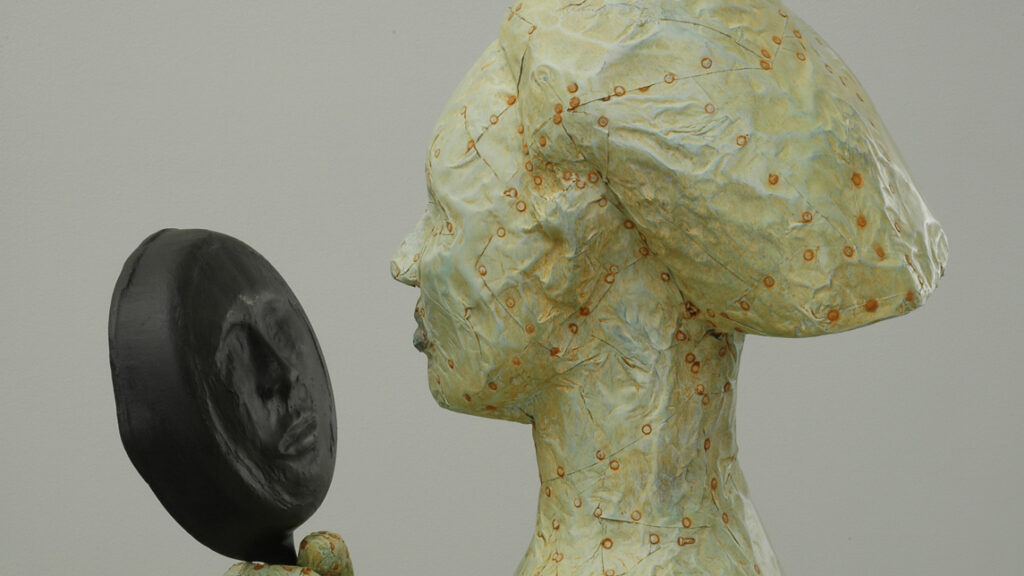
Art is a mirror for culture and history – and art is profoundly inspiring when it reflects our collective history’s most difficult moments.
Through Feb. 23, UNC Greensboro’s Weatherspoon Art Museum hosts “Mirror, Mirror: The Prints of Alison Saar,” an exhibition that speaks boldly about identity and the African American experience, including the history of slavery and domestic or agricultural servitude in the United States.
Saar, a Los Angeles-based master printmaker and sculptor, is the recipient of National Endowment for the Arts and Guggenheim fellowships, among many other honors. Her work appears at venues such as the Metropolitan Museum of Art, MOMA, the Museum of Fine Art in Houston, and now at the Weatherspoon, with work from the Collections of Jordan D. Schnitzer and His Family Foundation.
“For students – for art students it’s a masterwork in printmaking, because she’s used just about every process and every material you can imagine,” says Weatherspoon Art Museum director Nancy Doll, who coordinated the exhibition. “But also, a lot of the work speaks about identity and the Black experience, going back to slavery and relating to domestic experience – certain myths and stories that are part of the African American experience. There’s a lot there. There’s a lot of narrative content.”
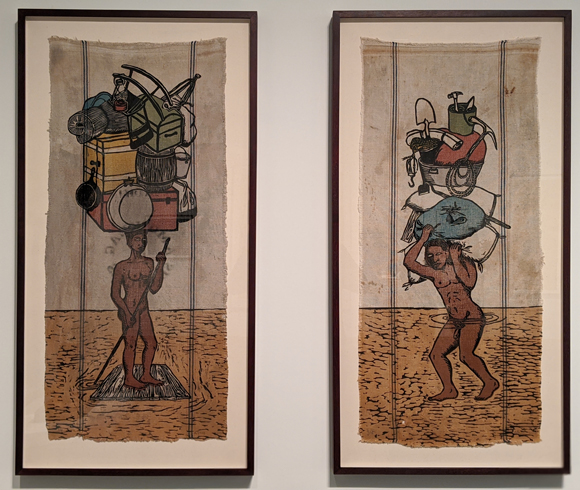
“Mirror, Mirror” is a thorough cross section of Saar’s work: prints of all different types – woodcuts, linoleum cuts, etchings, lithographs, work created on or from found objects and unusual materials – such as antique handkerchiefs or burlap sacks, and mixed-material sculptures which have inspired some of the prints.
Through the work you see images of African American figures relating to tools of domestic and field work – such as a shovel or frying pan – and engaged in symbolic contemplation of the identity, expression, and the body. You also see images of motherhood, separation, burden, stagnation, defiance, passage, and strength.
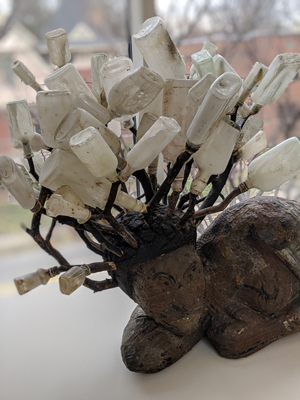
One piece of Saar’s, “Compton Nocturne,” is on permanent display at the Weatherspoon – museum visitors may remember that in the upstairs hall there rests a large reclined figure of a woman with glass bottles posed in her Medusa-like hair. Many of the pieces in the current exhibition speak to the same concepts, aesthetics, and symbols represented by the recognizable sculpture.
“Alison Saar’s figures are physically and conceptually powerful; they quote from ancient Greek and Egyptian statuary, African sculpture, folk art, and outsider art,” writes Doll in a catalog that accompanies the exhibition.
“Carved or modeled and cast in bronze, or appearing in any number of print forms, they are at once individuals and archetypes.”
Admission to the museum and parking are free. To learn more, visit weatherspoonart.org.
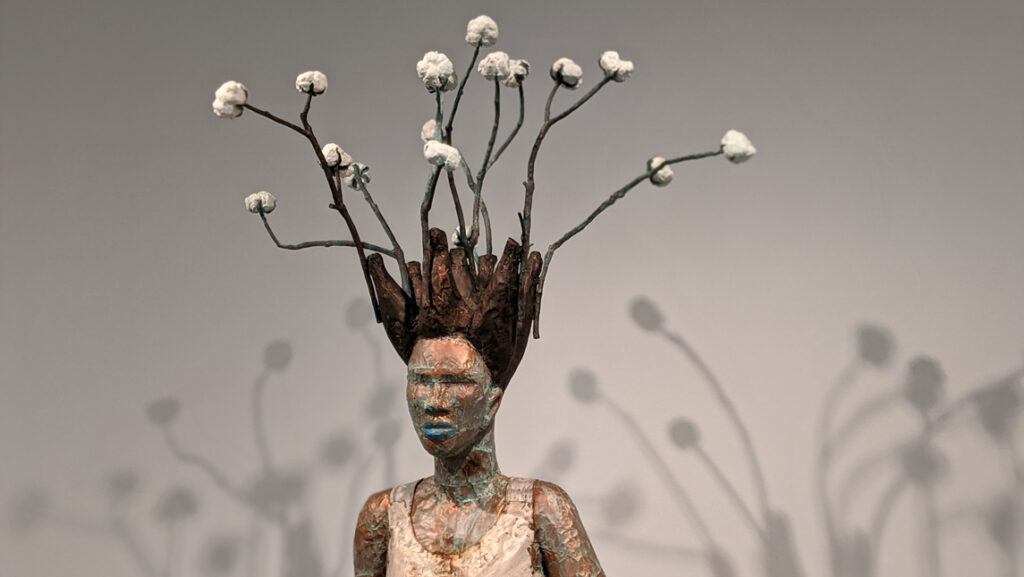
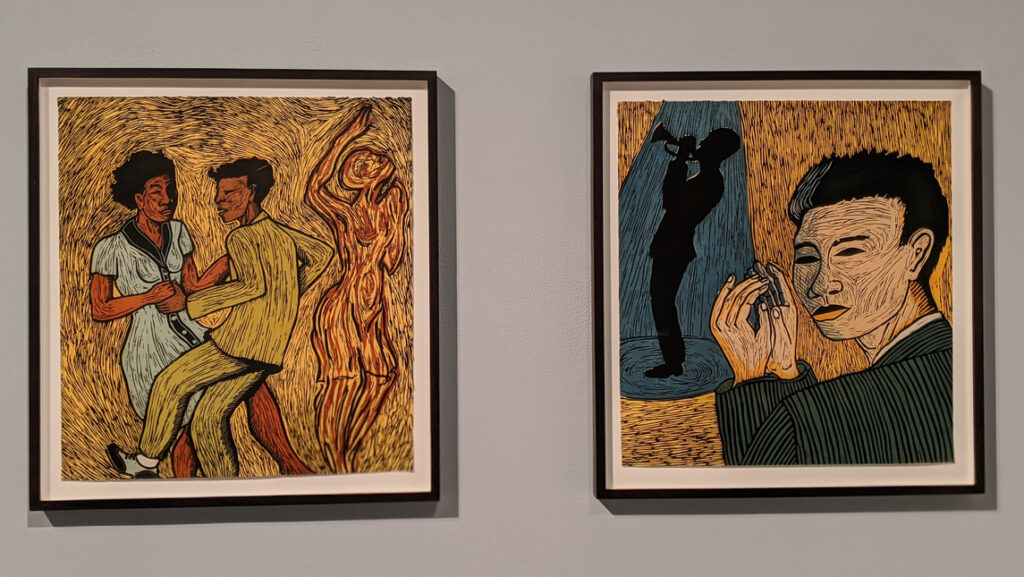
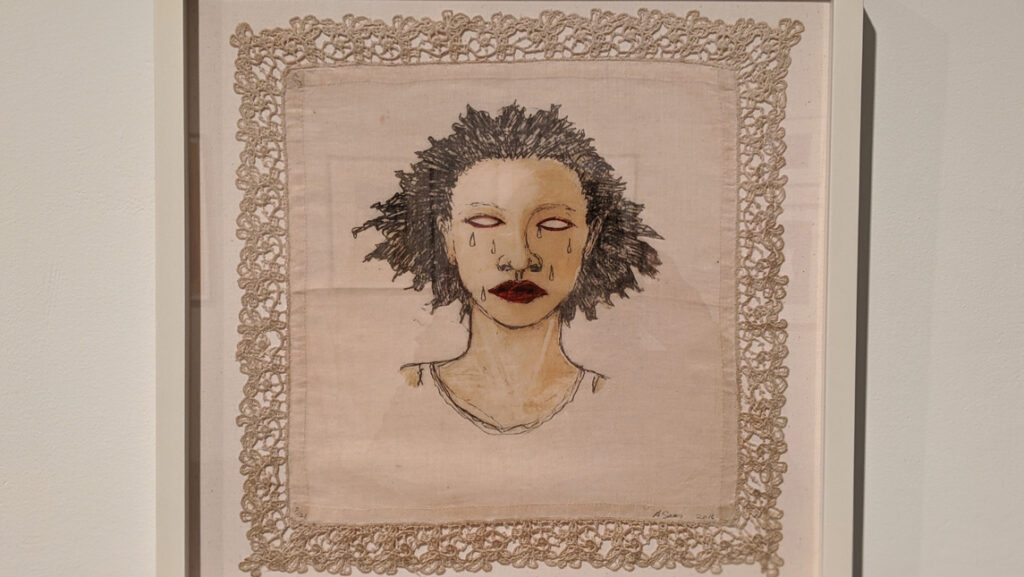
Story by Susan Kirby-Smith, University Communications
Photography courtesy of Weatherspoon Art Museum and by Susan Kirby-Smith
